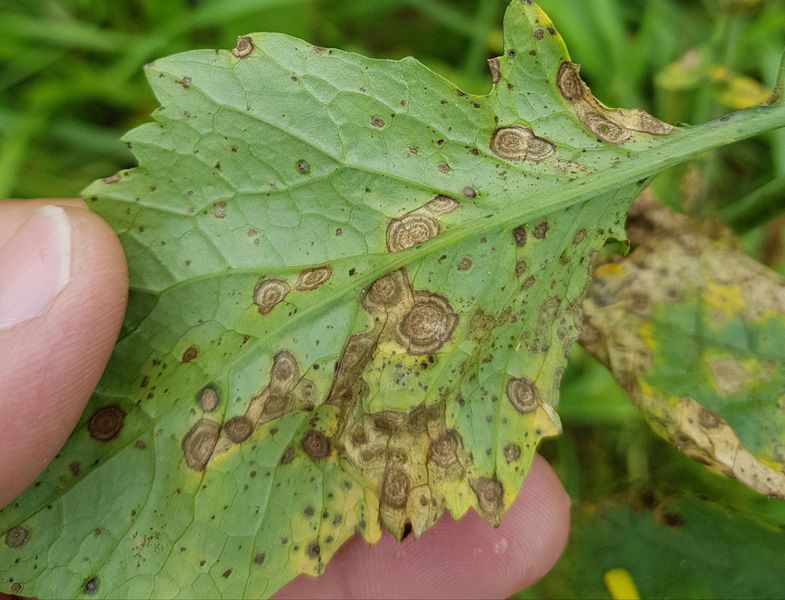
Early Blight – Alternaria Blight
Early blight- Alternaria blight
Common name
Early blight
Alternaria blight
Causal agent
Early blight is a fungal disease caused by two pathogens of the genus Alternaria. These pathogens attack members of the Solanaceae family, especially potatoes and tomatoes.
Scientific name
Alternaria solani
Alternaria tomatophila
Symptoms & Signs
The symptoms are visible on leaves, stems, fruit, and tubers. At first, small black or brown lesions surrounded by a yellow halo appear on the leaves. This is an exclusive symptom of early blight called the bullseye. Severely infected foliage turns brown and falls off the stem. Young seedlings may also be infected, showing collar rot. It affects the lower part of the plant first.
Transmission
It spreads to other plants by means of spores that travel through infected soil, water, and wind. High humidity (90% or more) favors the spread and growth of spores. The optimum temperature for the development of the disease is 82 to 86 F.
Time of concern
Early spring to late summer
Common hosts
Potato
Tomato
Pepper
Nightshade
